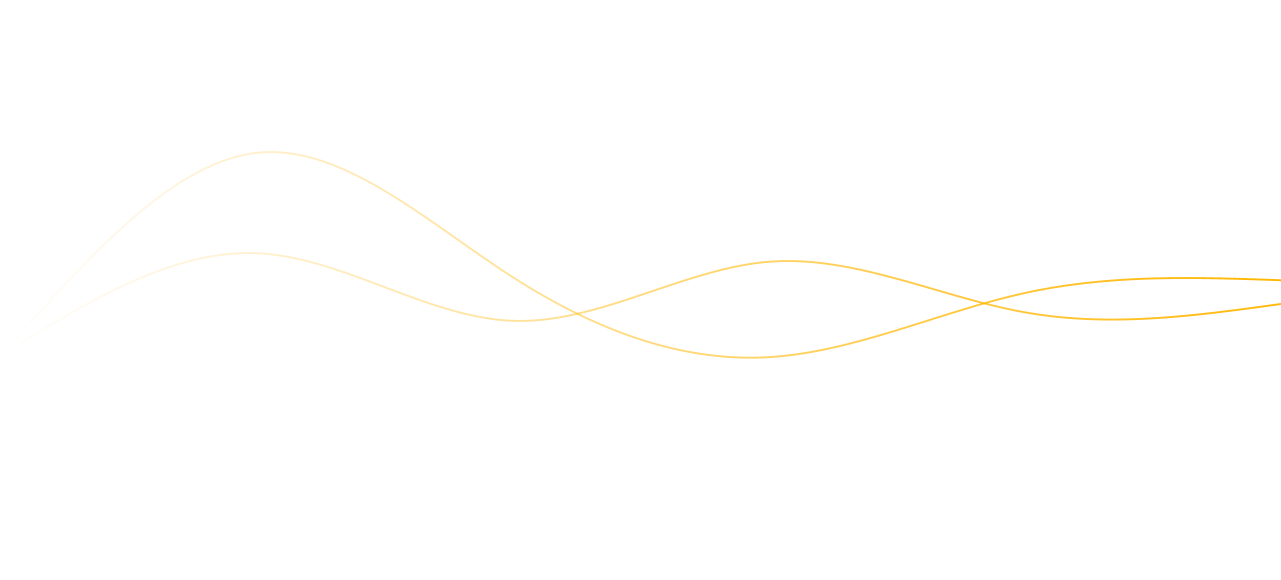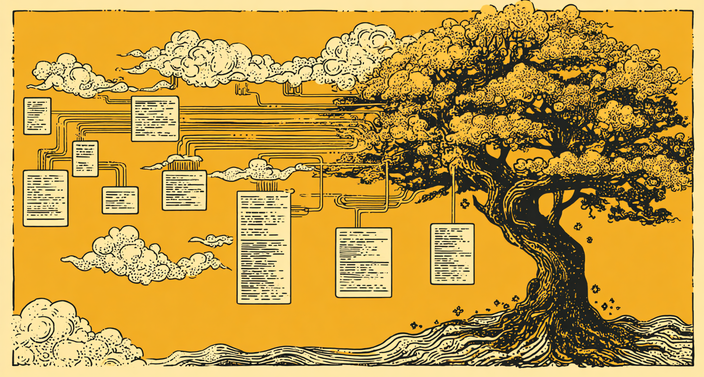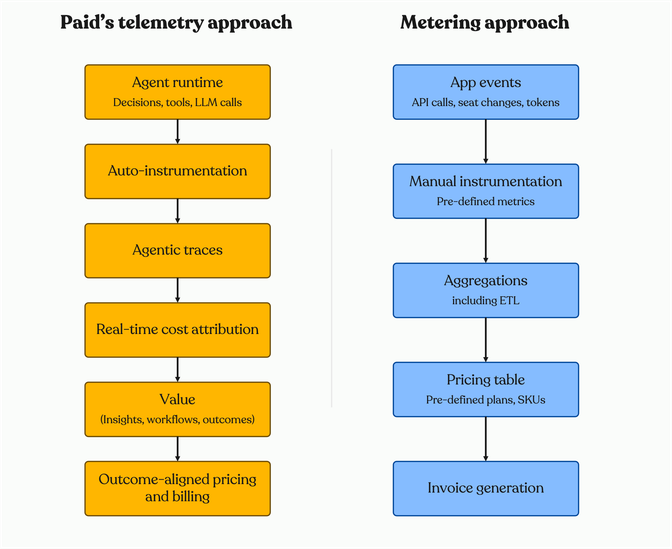Build agents, get paid
Understand your margins and get paid for the value your agents create.



Look, most SaaS billing systems were designed for a world that no longer exists. In traditional software, value correlated neatly with usage - more API calls = more compute = (often) more seats.
In the agentic era, that correlation breaks.
If your product is powered by AI agents, metering platforms are blind to what matters. Products like Metronome, M3ter, and Orb count activity. They don't understand outcomes. Paid collects telemetry traces (meaning what your agents do) so you can bill for value, not inputs.
If you're adding AI and agents to your SaaS, you need to read and understand this!
You may be angry with this, but Metering is a counting system. It tells you how much of something happened (typically connected to compute), not whether it mattered.
For classic SaaS models (API usage, storage, seats) counting was enough because it created a predictable relationship between cost and value.
With agents, that relationship collapses. I don't make the rules!
A single "API call" (if you can still call it that) might complete a trivial task or generate a million-dollar sales lead. A single agent run might make three dozen OpenAI requests, call an internal API, and hand off a Slack message or it might think for 30 seconds and do nothing because it ran out of context.
It's important to remind now that in the agentic world - compute ≠ value.
When you meter agents, you're measuring electricity, not intelligence.
Lots of Billing teams (myself included, at some point) thought that metering solves revenue visibility - but it doesn't.
Metering | Telemetry (Paid's approach) | |
|---|---|---|
Data type | Predefined metrics | Dynamic spans & traces |
Setup | Manual instrumentation | Auto-instrumentation via decorators/wrappers |
What it measures | Inputs (API calls, seats, tokens) | Outcomes (decisions, workflows, costs, value) |
Timeframe | Aggregated | Real-time streaming |
Who uses it | Product, engineering | Product, Engineering, Finance, Ops |
Ideal for | Semi-predictable usage | Autonomous or adaptive systems |
Metering platforms were built to aggregate numbers for invoicing. Telemetry platforms like Paid are built to understand what those numbers mean.

Paid's OpenTelemetry based approach captures traces: every agent decision, API call, cost, and result. It's visibility at the runtime level, not the invoice level.
Telemetry isn't a buzzword we're using - but rather a standard, via OpenTelemetry. Paid collects full OpenTelemetry spans from your agent runtime:
The result is immediate runtime visibility. You see exactly what your agents did, how much they cost, and which customer or workflow generated that cost.
Metering platforms like Metronome and Orb were built for a less "adaptable" world. They can do billing for infrastructure that behaves the same way every time (like GPU usage). Agents often don't behave the same way twice, they change based on context..
Metronome is great for classic usage billing. If your workload changes, you must update schemas and pipelines. It aggregates data before analysis, which means real-time cost view, behavioral insight, and visibility into agent execution is limited.
Orb expanded the stack adding pricing simulations and billing automation but it's still a metering-first platform. It expects a known schema and preconfigured metrics. Even with "raw events," you must decide what those events are ahead of time. That's fine for predictable usage, but impossible for adaptive agent systems.
Orb is built for billing. Paid is built for understanding.
Metronome measures aggregation. Orb measures activity. Paid measures understanding.
Feature | Metronome | Orb | Paid |
|---|---|---|---|
Predefined Metrics | ✅ | ✅ | ❌ |
Auto-Instrumentation | ❌ | ❌ | ✅ |
Real-Time Cost Attribution | ❌ | 🟨 lagging | ✅ |
Agent-Aware Billing | ❌ | ❌ | ✅ |
Built on OpenTelemetry | ❌ | ❌ | ✅ |
Traditional metering requires manual instrumentation — tagging every endpoint, defining usage keys, mapping data. With Paid, you wrap your existing client once.
await client.trace('<external_customer_id>', async () => {
return await agent.complete_task(paid_openai)
})await paidClient.trace("<external_customer_id>", async () => {
return await agent.processCustomerRequest(paidOpenAiWrapper);
}, "<optional_agent_id>");That's it. No schema migrations. No per-metric code changes. Every agent execution automatically produces a full OpenTelemetry trace with cost attribution, success rates, and outcome visibility.
A few lines of code replace weeks of instrumentation.
You can finally see what your AI feature is worth, which agent workflows create revenue, which waste compute, and how to price confidently.
Know which agent workflows burn most of your compute budget but generate the least customer value. Make product decisions based on actual economics, not estimates.
Real-time traces. No need to maintain separate logging and billing code. Debug performance issues in context: see latency, model cost, and business outcome together.
Debug with full context. See that a latency spike correlates with a model cost increase. Optimize where it matters.
Automatic per-customer cost attribution and margin visibility. Move from billing for activity to billing for outcomes.
Stop billing customers less than it costs to serve them. Spot margin problems before they compound.
Telemetry makes AI monetization a closed loop: Run → Observe → Attribute → Bill → Improve.
Metering asks: "How many API calls did you make?" Telemetry answers: "Did your agents deliver value?"
Customer A ran thousands of agent interactions last month. Half resolved tickets automatically. Half required human escalation. Should you bill the same for both?
Traditional metering says yes. Telemetry-based billing says no.
With Paid, you see:
That's pricing confidence instead of guesswork. Paid's approach lets you price on intelligence, not usage.
Move beyond counting usage. Start understanding value.
Understand your margins and get paid for the value your agents create.




Price smarter. Protect margins. Grow revenue.